“MGM’s 30th Anniversary Tribute”
(S7;E23)
~ February 14, 1954
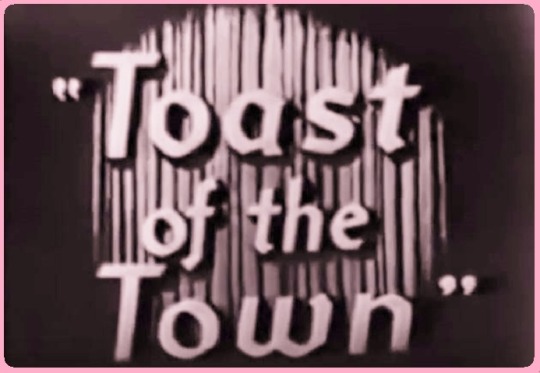
Directed by Robert Bleyer and John Moffitt
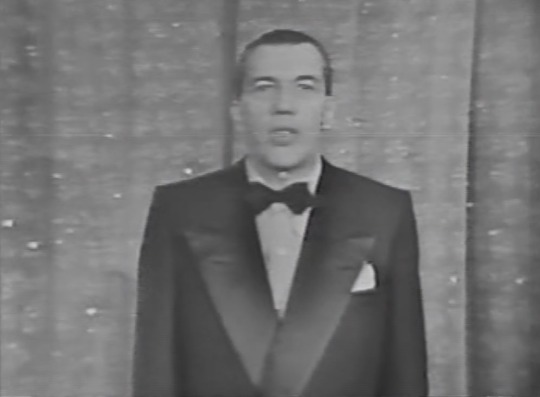
Ed
Sullivan (Host)
was a preeminent television variety show host who is best remembered
for hosting his own show, at first titled “Toast of the Town” but
later simply known as “The Ed Sullivan Show,” which became a
staple of Sunday night viewing for millions of Americans from 1948 to
1971. As such, his name was often mentioned on “I Love Lucy” and
Lucille Ball’s subsequent sitcoms. He introduced America to such
entertainers as Elvis Presley, The Beatles, and The Supremes.
Sullivan entered icon status when he and his television show were
worked into the plot of the Broadway musical Bye
Bye Birdie
in
1960. The musical includes the song “Hymn for a Sunday Evening”
which has a chorus that repeats Sullivan’s name in a choir-like
harmony. Hope made an appearance in the 1964 film version. The
theatre on Broadway in New York City where Sullivan did his weekly
show was named after him in 1967. He died in 1974.
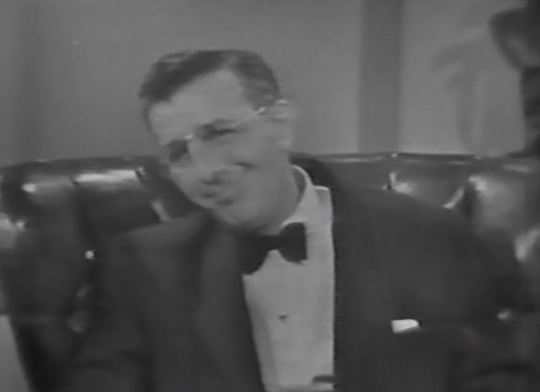
Dore
Schary
(Himself) was
born Isadore Schary in Newark, New Jersey, in 1905. After working on
Broadway he went to Hollywood were he eventually became head of MGM
in 1948, ousting its founder Louis B. Mayer. He would helm the studio
until 1956 and was in charge during Lucy and Desi’s filming of The
Long, Long Trailer
and
Forever,
Darling.
In 1955 he was supposed to play himself on “I Love Lucy,” but
backed out at the last moment and he was played by Phil Ober (Vivian
Vance’s husband) instead.
The
MGM Stars
Lucille
Ball (Herself
/ Tacy Collini from The
Long, Long Trailer)
was born on August 6, 1911 in Jamestown, New York. She began her
screen career in 1933 and was known in Hollywood as ‘Queen of the
B’s’ due to her many appearances in ‘B’ movies. With Richard
Denning, she starred in a radio program titled “My Favorite
Husband” which eventually led to the creation of “I Love Lucy,”
a television situation comedy in which she co-starred with her
real-life husband, Latin bandleader Desi Arnaz. The program was
phenomenally successful, allowing the couple to purchase what was
once RKO Studios, re-naming it Desilu. When the show ended in 1960
(in an hour-long format known as “The Lucy-Desi Comedy Hour”) so
did Lucy and Desi’s marriage. In 1962, hoping to keep Desilu
financially solvent, Lucy returned to the sitcom format with “The
Lucy Show,” which lasted six seasons. She followed that with a
similar sitcom “Here’s Lucy” co-starring with her real-life
children, Lucie and Desi Jr., as well as Gale Gordon, who had joined
the cast of “The Lucy Show” during season two. Before her death
in 1989, Lucy made one more attempt at a sitcom with “Life With
Lucy,” also with Gordon, which was not a success and was canceled
after just 13 episodes.

Desi
Arnaz
(Himself
/ Nick Collini from The
Long, Long Trailer)
was born in Cuba in 1917 and immigrated to America as a youngster. He
was a musician who married Lucille Ball in 1940 after meeting her on
the set of 1939’s Too Many Girls, which he had done on stage in New
York. In order to keep him ‘off the road’ Ball convinced
producers to cast him as her husband in a new television project
based on her radio show “My Favorite Husband.” The network was
convinced. In 1951, Arnaz and Ball began playing Lucy and Ricky
Ricardo, roles they would be identified with for the rest of their
lives. The couple had two children together, Lucie and Desi Jr. In
1960, Ball and Arnaz divorced. Desi became a producer, responsible
for such hits as “The Mothers-in-Law” (1967-69). He re-married in
1963. Desi Aranz died in 1986, just a few years before Ball.
Lucy
and Desi enter to the tune of “The I Love Lucy Theme”.
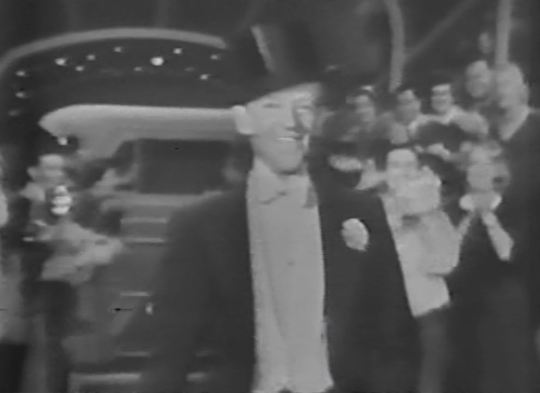
Fred
Astaire
(Himself / Tom Bowen from Royal
Wedding /
Don Hewes from Easter
Parade)
was one of the most famous performers in Hollywood, known for his
dancing, singing, and directing. He did four films with Lucille Ball
between 1935 and 1945, three with his dance partner, Ginger Rogers.
Astaire received an honorary Oscar in 1950. He died in 1987 at age
88.
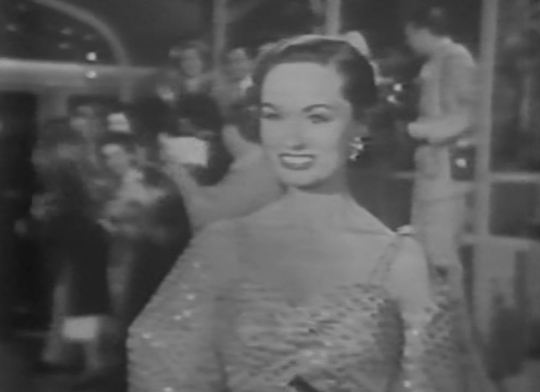
Ann
Blyth
(Herself / Kathie Ruder from The
Student Prince)
was nominated for an Oscar for her appearance in 1945’s Mildred
Pierce. Blyth was equally at home in musicals, a specialty of MGM.
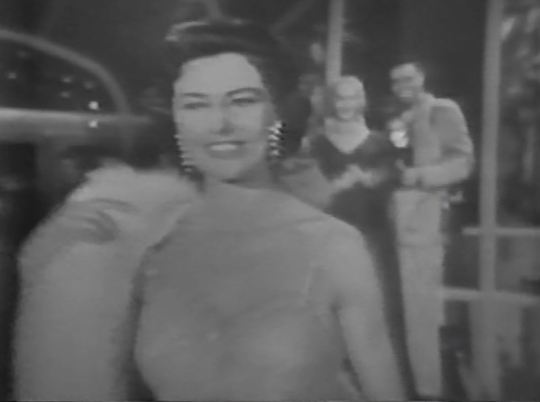
Cy
Charisse
(Herself)
was born Tula Ellice Finklea in Amarillo, Texas.
She was best known as a dancer in the MGM movie musicals of the
1950s. She did two films with Lucille Ball in the mid-1940s. She died
in 2008 at age 86.
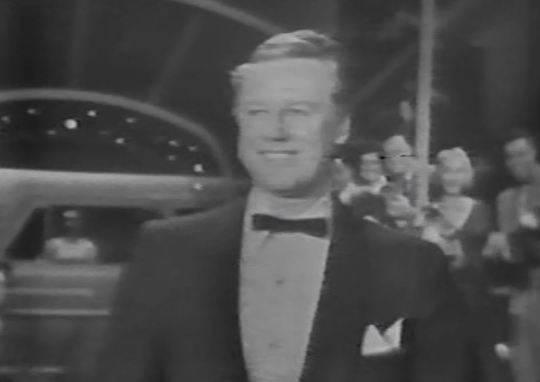
Van
Johnson
(Himself) co-starred
in Too
Many Girls (1940),
the film that introduced Lucille Ball to Desi Arnaz. He was also seen
with Lucy in the films Easy
to Wed
(1946)
and the recently released Yours,
Mine and Ours
in
1968. He played himself on one of the most popular episodes of “I
Love Lucy,” “The
Dancing Star” (ILL S4;E27)
as well as an episode of “The Lucy Show.” He starred in The
Romance of Rosy Ridge
(1947)
and the 1954 film The
Caine Mutiny.
He died in 2008 at age 92.
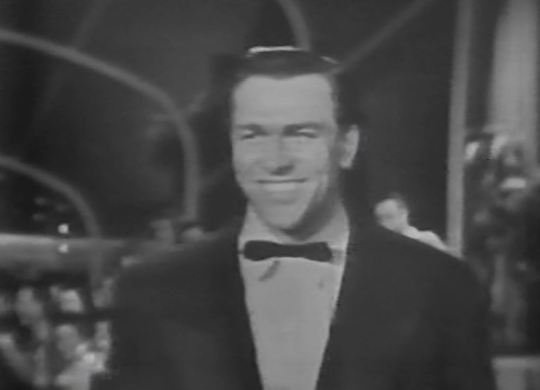
Howard
Keel
(Himself
/ Adam from Seven
Brides for Seven Brothers /
Frank Butler from Annie
Get Your Gun)
was discovered by Oscar Hammerstein II during auditions for John
Raitt’s replacement in Broadway’s Carousel
in
1946. After that, he also went on to play Curly in Oklahoma!
He
is probably best remembered for his role in MGM’s Seven
Brides for Seven Brothers
(1954),
a film that was mentioned on “I
Love Lucy.”
On
TV he played Clayton Farlow on “Dallas” (1981-91). His only
acting appearance with Lucille Ball was on a 1969 episode of “Here’s
Lucy.” Keel died in 2004.
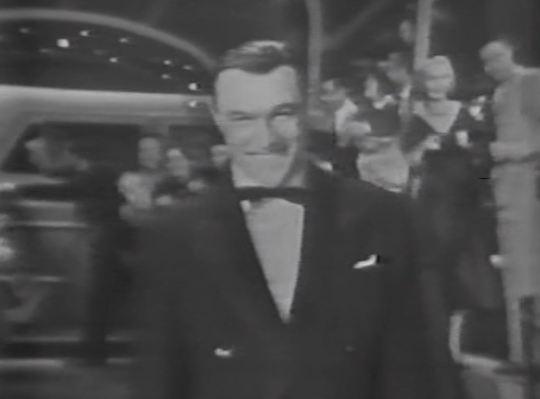
Gene
Kelly
(Himself / Don Lockwood from Singin’
in the Rain)
was
an Oscar-winning performer who did four films with Lucille Ball
between 1943 and 1967. In 1978 Lucille Ball was seen on the TV
tribute special “Gene Kelly: An American in Pasadena.” In 1980,
Kelly turned up on “Lucy Moves To NBC.” A Hollywood legend for
his effortless dancing, Kelly died in 1996 at age 83.
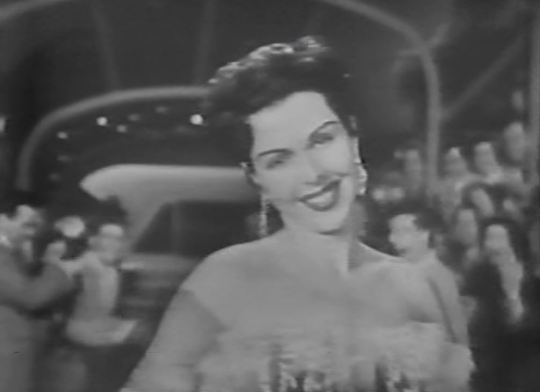
Ann
Miller
(Herself) was a performer best known for her singing and tap dancing
in movie musicals, as well as her shapely legs. It is said that she
was discovered
by Lucille
Ball
while doing a show at a nightclub in San Francisco.
She subsequently did four films with Lucille Ball, including Too
Many Girls (1940),
the film that introduced Lucy to Desi Arnaz. Miller died in 2004 at
age 80.

Walter
Pidgeon
(Himself / Frederick Alderson from
Executive Suite)
was a Canadian-born actor who was nominated for two Oscars in 1942
and 1943. He died in 1984 at age 87.
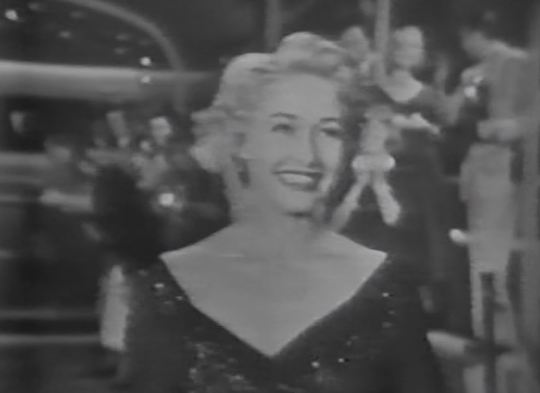
Jane
Powell
(Herself / Ellen Bowen from Royal
Wedding)
was best
known for her role as Milly in Seven
Brides for Seven Brothers
(1954). After 1957, her film roles disappeared and Powell began
performing on stage.

Debbie
Reynolds
(Herself) was nominated for an Oscar for playing The
Unsinkable Molly Brown
in 1964. Her first big hit was playing Kathy Selden in MGM’s Singin’
in the Rain
in 1952. She died in 2016 at age 86.

Lana
Turner
(Herself) was one of Hollywood’s most popular actresses and also a
favorite of Fred Mertz. She was best known for her femme fatale
roles. She was nominated for an Oscar in 1957 for Peyton
Place.
Turner was seen with Lucille Ball in Du
Barry Was A Lady
(1943). She died in 1995 at age 74.
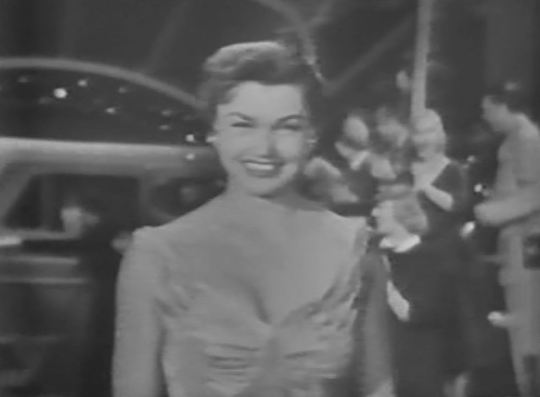
Esther
Williams
(Herself / Eve Barrett from Neptune’s
Daughter)
was an actress best known for her aquatic roles. Lucille
Ball starred with Williams in Easy
to Wed
(1946)
and Ziegfeld
Follies
(1945).
Williams was mentioned on “I Love Lucy” in 1955.
Also
Appearing
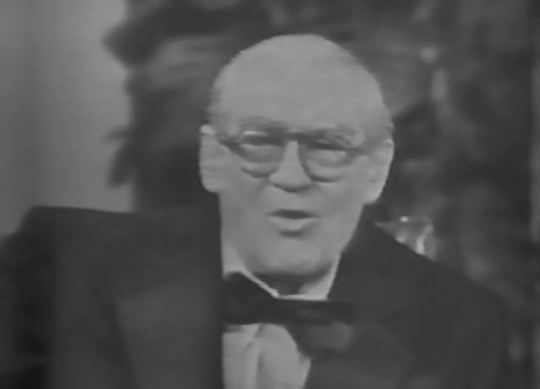
Lionel
Barrymore (Himself)
was the patriarch of the Barrymore acting family of stage and screen.
His most famous role was that of the nefarious banker Mr. Potter in
It’s
A Wonderful Life (1946).
Barrymore had difficulty walking later in life, which accounts for
the fact that he does not enter with the other MGM stars in the
opening number, and why he is discovered sitting in the screening
room after the first clips segment.
Edmund
Purdom
(Prince Karl from The
Student Prince)
was an English-born actor who also appeared in MGM’s Julius
Caesar.
Purdom holds
the distinction of being the only personality to have their
hand/footprints removed from the forecourt of Grauman’s Chinese
Theater because industry insiders felt the honor was too soon, having
only done three credited films. He spent his later life in Italy and
died there in 2009.
Johnny
Green
(Himself, Conductor) was a composer and MGM’s General Musical
Director. He conducts the orchestra for the program.
Julia
Meade
(Herself, Mercury Spokeswoman) became a
household name showing off dream cars of the ‘50s like Lincoln and
Mercury bedecked in evening dresses and strings of pearls, while
describing the cars with perfectly manicured hands running up and
down the upholstery.
She died in 2016 at age 90.
ANNIVERSARY TRIVIA

To mark their 30th anniversary, MGM also had a ten-minute orchestral overture produced for symphony orchestra comprised of themes from eleven of their great musicals. Johnny Green conducted the overture, which was filmed in Cinemascope and in color to run along with their motion pictures in cinemas.

MGM also issued a record album consisting of excerpts from the soundtracks of many of their musicals.

MGM also hosted a press event with a small number of their stars which turned up on newsreels nationwide. Louis B. Mayer and Dore Schary shook hands in front of a large cake.
TOAST OF THE TOWN

After
Ed Sullivan makes some welcoming remarks, the opening number
introduces the celebrities, who get out of a white limousine and walk
the red carpet, greeted by fans who shout their name and the cameras
of the press. These celebrities included Lucy and Desi, who are the
only couple introduced and the only ones only introduced by just
their first names.
Sullivan
introduces MGM studio executive Dore
Schary,
who invites him to his private screening room. This is actually just
an adjacent set on the soundstage.

One year later, Schary was to play
himself on an episode of “I Love Lucy,” but withdrew at the last
moment. The role was taken by Vivian Vance’s husband, Phil Ober. Some
said that Schary was reluctant to do television as it was supplanting
MGM’s film attendance, but Schary’s official reason was illness.
Because Ricky Ricardo (like the Arnazes) would work for MGM, it made
sense to mention Schary’s name early in the Hollywood episodes.
Lucy’s forgetful mother, Mrs. McGillicuddy (Kathryn Card), often said
“Who’s
Dore Schary?”

In
the screening room, Sullivan and Schary engage in some friendly
banter (obviously read off teleprompters) in which Schary gets in a
plug for MGM’s upcoming film Julius
Caesar
directed by Joseph Mankewicz. Sullivan introduces a retrospect of
MGM’s first three decades, which includes a title card, and a film
clip for the following movies:
- THE
BIG PARADE (1924) starring John Gilbert and Rene Adoree - BEN
HUR (1925) starring Ramon Novarro and Francis X. Bushman - MIN
AND BILL (1930) starring Wallace Beery and Marie Dressler - DINNER
AT EIGHT (1933) starring Marie Dressler and Jean Harlow - MUTINY
ON THE BOUNTY (1935) starring Charles Laughton and Clark Gable - SAN
FRANCISCO (1936) starring Clark Gable and Jeanette MacDonald - BOYS
TOWN (1938) starring Mickey Rooney and Spencer Tracy - GRAND
HOTEL (1932) starring Greta Garbo and John Barrymore - A
NIGHT AT THE OPERA (1935) starring Groucho Marx and Margaret Dumont - THE
PHILADELPHIA STORY (1940) starring Katharine Hepburn and Cary Grant - GONE
WITH THE WIND (1939) staring Clark Gable and Vivien Leigh
Sullivan
adds that Gone
With The Wind
will be re-released in 1954. He mentions a few films that were not
included in the clips: Mrs.
Miniver, The Yearling, Battleground, Ivanhoe, Mogambo, Quo Vadis and
Knights of the Roundtable.
Noticeable
by its absence is The Wizard of Oz (1939) which (a lot like Lucille
Ball herself) was only considered a classic after being seen
repeatedly on television. The musical fantasy film was not aired on
TV until 1956, two years after this program.
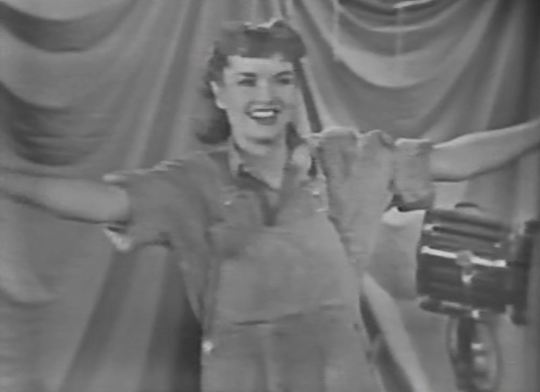
When
the tribute is over, Sullivan and Schary are joined in the screening
room by Lionel
Barrymore,
the patriarch of the fabled Drew / Barrymore acting dynasty.
Barrymore introduces a young singer named Debbie
Reynolds,
who, dressed in overalls in a backstage setting, performs a number
called “Applause, Applause” which she sang in the 1953 MGM
musical Give
A Girl A Break.
Blooper
Alert!
After the number, when Sullivan and Schary are seen in front of the
curtain, the audio cuts out and only slowly returns during their
conversation.
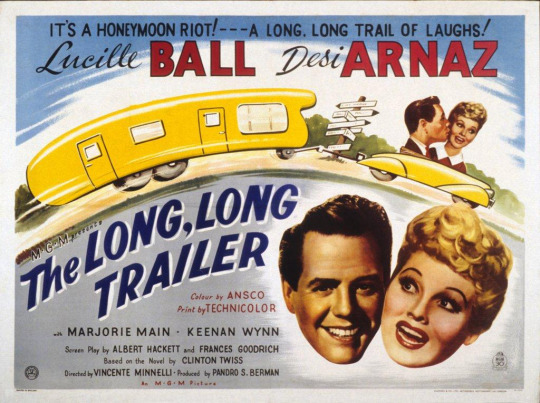
Sullivan
and Schary do a live promo for their sponsor, Mercury automobiles.
Schary says that Mercury cars were prominently featured in their new
film The
Long, Long Trailer
and screens a montage of clips from the Vincente Minnelli film.
Although most of the clips are of the car (which towed the title
trailer), there is one classic clip of Lucy trying to make dinner in
the moving trailer and one of Desi singing – both stars doing what
they did best. The film premiered four days after this program aired.
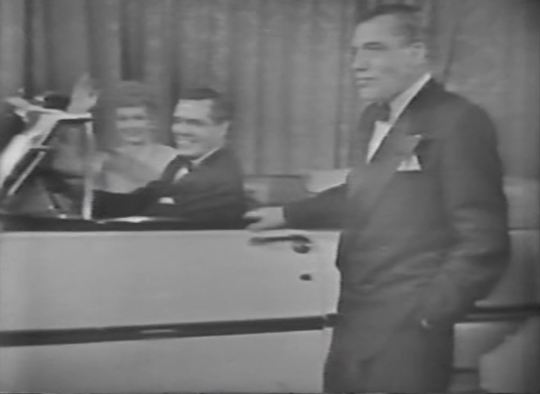
After
the clips, Sullivan is standing in front of a brand new 1954 Mercury
which contains Lucille
Ball and
Desi
Arnaz in
the front seat. (The car in the film was a 1953 model.) Sullivan
reminds the audience that he gave Lucy and Desi the Emmy Award for “I
Love Lucy” sponsored by Philip Morris. Desi has a couple of lines;
Lucille merely laughs.
Blooper
Alert: During
the Mercury spot, Sullivan is looking into the wrong camera.
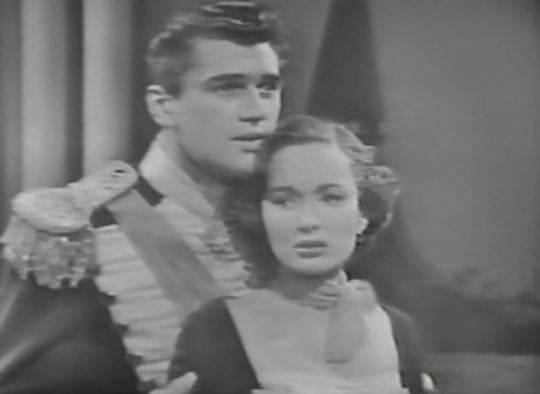
Hearing
orchestral music, Sullivan approaches Dore Schary who introduces
Edmund
Purdom and
Ann Blyth
doing a live scene from their upcoming film The
Student Prince,
which will be released in June 1954. Because Purdom’s singing voice
was dubbed by Mario Lanza in the finished film, he does not sing,
although Blyth performs “Deep in My Heart, Dear.”

Back
in the screening room, Sullivan and Schary promote Ann Blyth’s
appearance in the upcoming MGM film Rosemarie.
Schary presents a promo for the new film Executive
Suite,
which features William Holden, June Allyson, Barbara Stanwyck,
Frederic March, Walter Pidgeon, Shelley Winters, Paul Douglas, Dean
Jagger, and Nina Foch. Douglas, Winters, and Douglas would all guest
star in “Lucy” sitcoms.

Schary
introduces Howard
Keel
from the upcoming MGM musical Seven
Brides for Seven Brothers.
Stepping into a barn setting, Keel becomes Adam, his character in the
film, and along with his six ‘brothers’ sings “Sobbin’ Women.”
The film opened in July 1954. In March 1956 it was mentioned on “I
Love Lucy.”
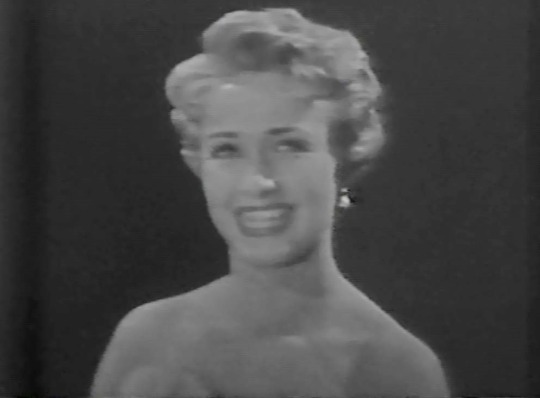
Sullivan
introduces the evening’s conductor Johnny Green, and Jane
Powell,
who sings “The Jewel Song” from the opera Faust
by Charles Gounod.
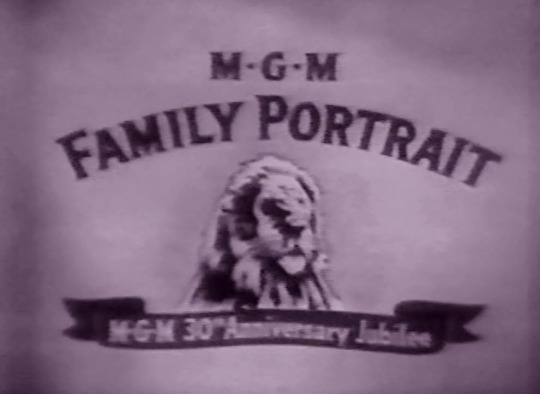
Back
in the screening room, Schary introduces another round of clips, this
time from famous MGM musicals:
- ANNIE GET YOUR GUN (1950)
starring Betty Hutton, Howard Keel, Keenan Wynn and Louis Calhern
singing “There’s No Business Like Show Business” by Irving Berlin - NEPTUNE’S
DAUGHTER (1949) starring Esther Williams and Ricardo Montalban
singing “Baby, It’s Cold Outside” by Frank Loesser - SINGIN’
IN THE RAIN (1952) starring Gene Kelly singing “Singin’ in the
Rain” by Nacio Herb Brown and Arthur Freed - ROYAL
WEDDING (1951) starring Fred Astaire and Jane Powell singing “How
Could You Believe Me When I Said I Loved You When You Know I’ve Been
A Liar All My Life” by Burton Lane and Alan J. Lerner - BECAUSE
YOU’RE MINE (1952) starring Mario Lanza and Doretta Morrow singing
“Because You’re Mine” by Nicholas Brodzsky and Sammy Cahn - EASTER
PARADE (1948) starring Judy Garland and Fred Astaire singing “Easter
Parade” by Irving Berlin

Back
in the screening room, Ed Sullivan informs the audience that the show
is coming from the brand new CBS Television City in Hollywood. Julia
Meade
shows the model of Television City. This is the same model shown by
Jack Benny on “Stars in the Eye” the show that celebrated the new
studio in 1952. It also featured Lucy and Desi. Meade turns this
segment into a live commercial for Mercury.

Dore
Schary introduces Lana
Turner
(backed up by Nick Anderson, John Erickson, Steve Forest, Edmond
Purdom) who perform “A Great Lady Has an Interview,” by Roger
Edens and Kay Thompson, a song sequence originally performed by Judy
Garland in Ziegfeld
Follies,
a 1946 film that also starred Lucille Ball.
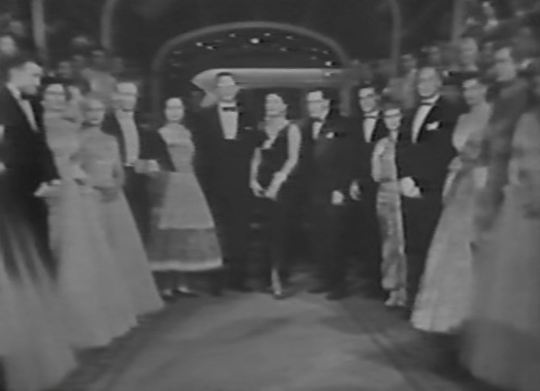
Surrounded
by the MGM stars, Sullivan and Schary say goodnight.
On
This Date in Lucy History
~ February 14

“Don
Juan and the Starlets”
(ILL S4;E18) ~ February 14, 1955

“Lucy
Dates Dean Martin” (TLS S4;E21) ~ February 14, 1966
Leave a comment